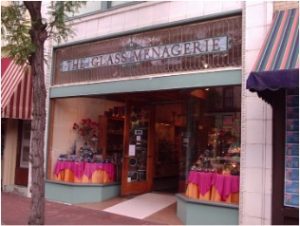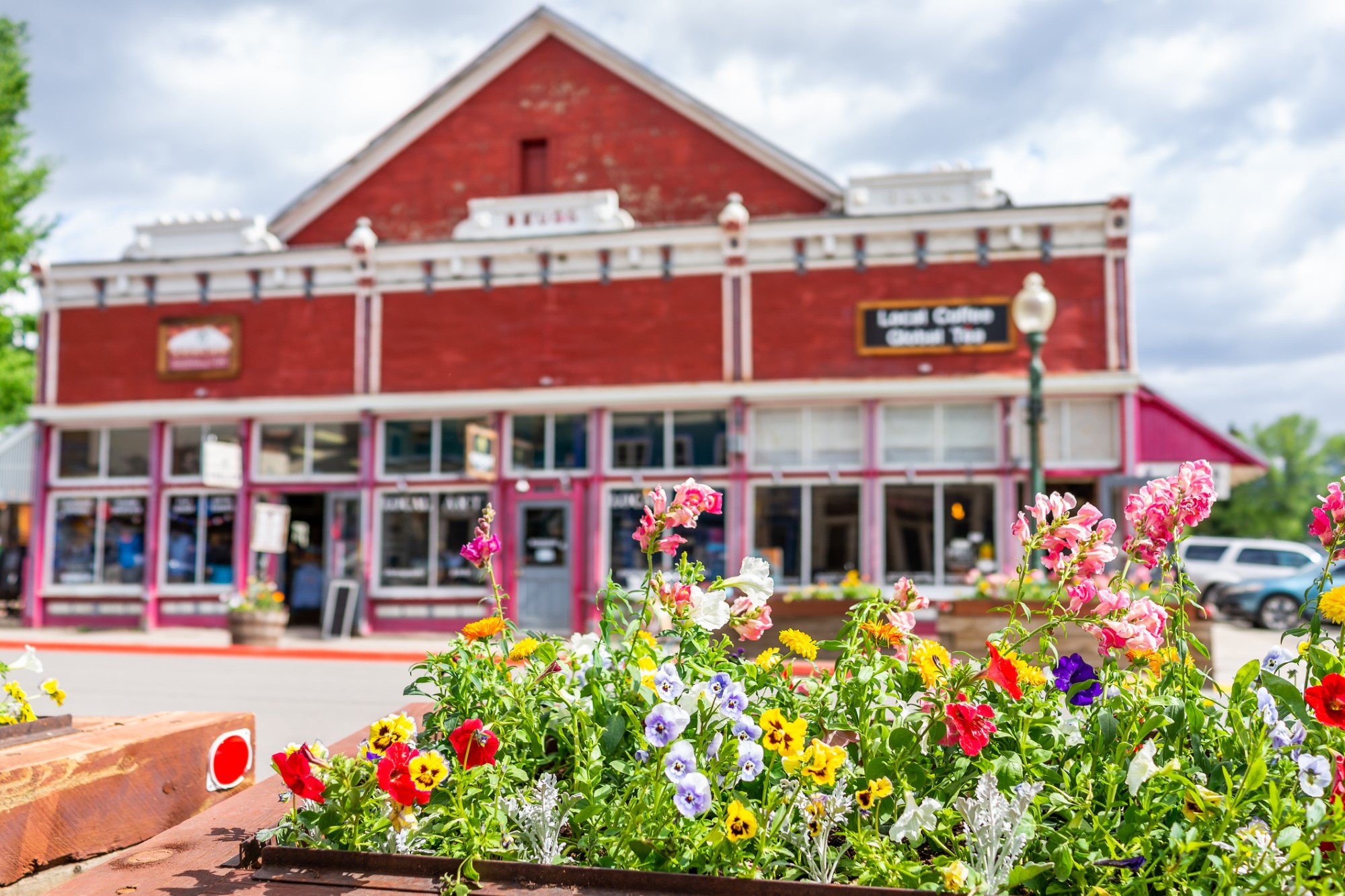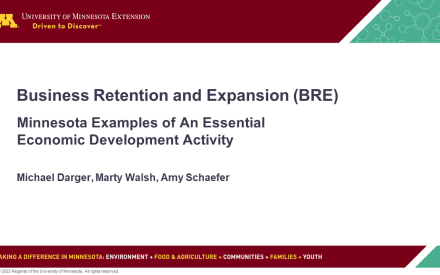Summary of a presentation by Carol Gies*
January 2010 — As a result of the economy and changes in the retail market, it is important that downtown tenant recruitment efforts recognize changes in consumers and competition. A generic retail recruitment formula does not work downtown. Carol Gies of 4Insights, Inc. shared her perspectives on this topic at the International Downtown Association 2009 Annual Conference in Milwaukee.
Changing Market
Downtown recruitment needs to recognize trends resulting from the current economic recession. Many believe that consumers will start spending a little more in 2010. However, they have learned the importance of looking for deals, sales, and buying in bulk. Many consumers are also desiring convenience, often integrating shopping within their daily routines (during the work day or between errands and appointments). No longer are they single trip shoppers. Downtowns having clusters of unique stores with easy parking have opportunities to succeed. However, they face fierce competition for tenants as there is excess vacant retail space throughout our communities. For some retailers it is a good time for expansion as rents, property values and construction costs are lower.
Examples of expanding independent and regional/national chain stores that might fit well in a downtown include:
- quick-service restaurants and storefront fast food
- cellular stores
- pet supplies
- casual and discount shoes
- beauty supplies
- small hobby and crafts
- specialty coffee and tea
- wine/beer/liquor
- optical, medical and comfort aids
- dollar stores
- thrift stores
- drug stores
- convenience stores
- value and organic groceries
Today it is important to go beyond traditional market analysis techniques in examining these business opportunities. Additional local survey research should be used to supplement “demographic and lifestyle data.” Similarly, “demand/supply reports” may not fully reflect retail behavior in the current economy.
The Right Tenants for Downtown
Every downtown should have a tenant mix plan that recognizes the consumer market and the competition. However, there are some general characteristics of retailers that typically work well in central business districts. These are presented below.
 Top requested retailers from your consumer surveys. Those survey responses from your top “lifestyle” consumer segments are most important.
Top requested retailers from your consumer surveys. Those survey responses from your top “lifestyle” consumer segments are most important.- Proven operators, especially those who have more than one unit. These retailers already know how to expand and have developed a local or regional reputation.
- Entrepreneurial start-ups if positioned in secondary locations. However, they typically should not be the first anchor tenants who set the quality tone for the rest of your recruitment efforts. Startups may fail and often require more assistance.
- Retailers who don’t rely on walk-in customers for their business. They should also serve corporate accounts, catering, mail order, e-commerce orders, See subsequent Downtown Economics article on “backdoor retailing.”
- Retailers who capture different consumer segments during different parts of the day. Examples include commuters for breakfast, office workers at lunchtime, the afterschool parent or student crowd, daytime stroller moms and retires, and the late night crowd.
- Retailers who carry errand-running, impulse, and browsing items that are of interest to the workplace and daytime populations. These purchases do not depend on consumer trips from home.
- Retailers that are open evenings and late on weekends. These businesses add life to the street beyond normal office hours.
- Retailers that invest in professionally designed and lighted windows. The businesses add interest to the downtown retail stroll. Ideally, window displays will change depending on the seasonal selling.
- Retailers who are technology savvy. These retailers know how to capture customer email addresses for marketing and e-commerce. They also build customer loyalty through social networks and e-communication.
- Retailers who engage customers on-site. These businesses use sampling, tasting, demonstrations, appearances, classes and promotional events to enhance the retail experience.
- Retailers who are active building their own presence and brand in their communities. They support their host community’s activities and events to build goodwill and awareness.
- Retailers who monitor trends including their customer’s changing demographics, lifestyles and tastes in the new economy. They are alert and flexible, ready to adjust products, pricing, and promotion.
- Retailers who have outdoor seating areas to bring life to the street. These businesses utilize their street-front as a marketing asset and contribute to downtown’s “sense of place.”
- Retailers who have as broad a customer base appeal as possible. There is a risk in becoming too niche dependent (as is apparel). Card shops, art stores, office supply stores, cell phone stores, specialty food stores, and unisex beauty supply store are examples of businesses that appeal to a wide age range of both genders.
- Retail that can’t be found anywhere else in your trade area. When numerous unique retailers are clustered together, downtown can develop a reputation as an alternative to shopping centers and their large-format store.
Conclusion
Recruiting the right tenants for downtown retail space requires understanding recent changes in consumer behavior and a knowledge of what kinds of businesses have historically (and recently) worked well in these districts. A generic retail recruitment formula does not work downtown. Given major changes in shopping centers and their retail tenants, it is more important than ever that downtowns follow their own path to retail success.
For examples of unique downtown retailers that are drawing customers back downtowns, see the UW-Extension Innovative Downtown Businesses clearinghouse: http://www.uwex.edu/ces/cced/downtowns/innovative/
*Carol Gies is president of 4Insights, Inc. a Chicago based retail consulting firm. Information in this article was drawn from her presentation at the International Downtown Association – 2009 Annual Conference in Milwaukee titled “Revitalizing Downtown Retail.” This article was summarized by Bill Ryan, UW-Extension.
CONTACT
William Ryan, Community Economic Development Program, University of Wisconsin-Madison, Division of Extension 702 Langdon Street, Madison, WI 53706
PH: (608)263-4994; FAX: (608)263-4999; Dial 711 for Wisconsin Relay



 Business Owners of Color in Wisconsin: Representation, Profitability, and Growth
Business Owners of Color in Wisconsin: Representation, Profitability, and Growth Business & Workforce Development: Clean Energy Funding Series
Business & Workforce Development: Clean Energy Funding Series Business Retention and Expansion (BRE) – Minnesota Examples of An Essential Economic Development Activity
Business Retention and Expansion (BRE) – Minnesota Examples of An Essential Economic Development Activity WIndicators Volume 5, Number 5: Understanding and Mobilizing the Potential of Entrepreneurs of Color in Wisconsin
WIndicators Volume 5, Number 5: Understanding and Mobilizing the Potential of Entrepreneurs of Color in Wisconsin 


